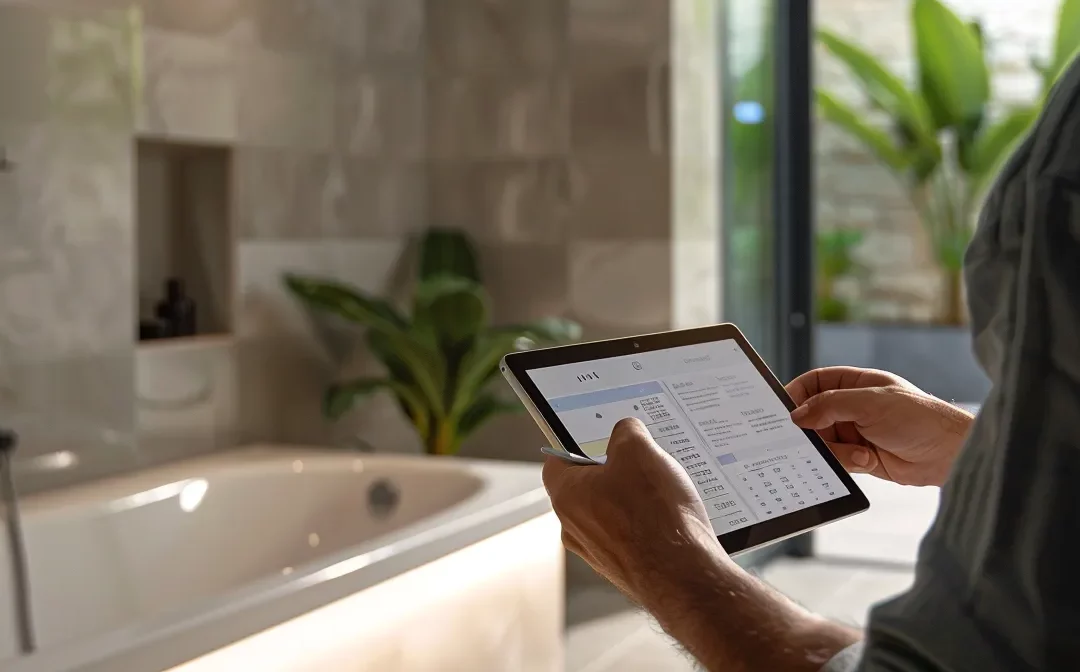Decoding Your Bathroom Renovation Cost Breakdown
Navigating the costs associated with a bathroom remodel can be a challenging endeavor, especially when considering bathroom and kitchen resurfacing options. According to the Master Builders Association of Victoria, understanding the essential elements that contribute to the overall expense—such as the choice of countertops and labor costs—can help homeowners plan their renovation projects more effectively. With detailed insights into each segment of renovation expenses, individuals can position themselves for a successful construction experience. Keep reading to uncover the intricacies of bathroom renovation cost breakdowns and find valuable strategies to manage your budget wisely.
Key Takeaways
- Understanding project scope helps in establishing realistic budgets and timelines
- Consider potential hidden costs when planning for bathroom renovations to avoid budget overruns
- Hiring individual contractors can lead to higher quality work but may be less efficient
- Scheduling renovations during off-peak seasons can lead to significant cost savings
- Setting aside a contingency fund ensures readiness for unexpected expenses during renovations
Understanding the Basics of Bathroom Renovation Costs
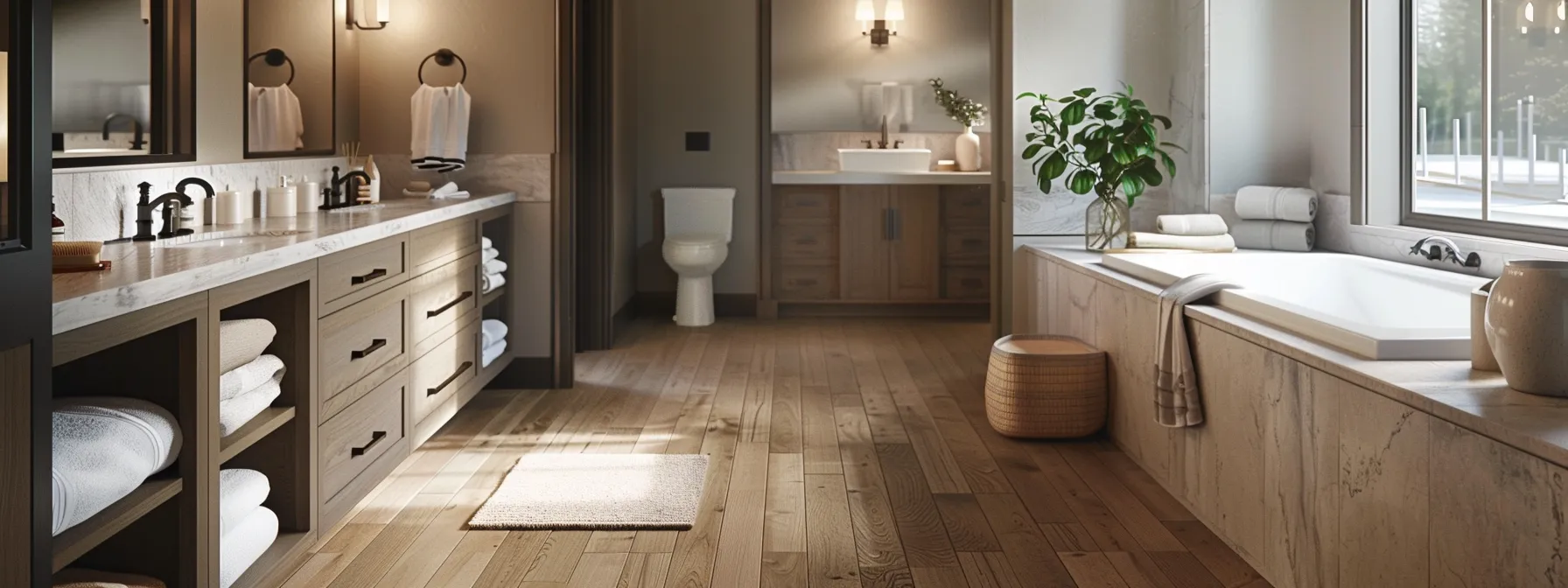
Bathroom renovation and kitchen resurfacing costs can vary significantly based on several important factors. Determining the scope and scale of the remodel is crucial, as it sets the foundation for budgeting. Whether upgrading to luxurious granite countertops, adding stylish sconces, or selecting elegant wood flooring, each choice contributes to the overall expense. Furthermore, understanding benchmark prices for average bathroom sizes can provide homeowners with a clearer picture of expected costs. Various elements, such as the quality of materials, labor, and necessary permits, will ultimately influence the total investment in a successful bathroom remodeling project. The integration of thoughtful details, like linen storage solutions, ensures that the renovation meets both aesthetic and functional needs, as recognized by the Master Builders Association of Victoria.
Determining Your Renovation Scope and Scale
Determining the scope and scale of a bathroom and kitchen resurfacing renovation is essential for establishing accurate budgets and timelines. Homeowners should assess their needs, which may include consulting with bathroom remodelers for professional insights and recommendations from the Master Builders Association of Victoria. Key components might involve updating plumbing, electrical systems with a qualified electrician, or simply replacing towels and soap accessories to refresh the space without extensive renovations.
Benchmark Prices for Average Bathroom Sizes
Benchmark prices for average bathroom sizes serve as a valuable reference point for homeowners considering a bathroom remodel project. A typical mid-range renovation, which includes new cabinetry and upgraded plumbing fixtures, can cost anywhere from $10,000 to $25,000. Additionally, incorporating changes such as updated electrical wiring and a refreshed ceiling can further influence the overall budget, emphasizing the need for a comprehensive cost analysis prior to starting the renovation.
Key Factors That Influence Overall Costs
Several key factors can significantly impact the overall costs of a bathroom renovation. For example, the choice of fixtures, such as a stylish light fixture or a modern soap dispenser, can lead to varying price points. Engaging a general contractor to oversee the project can streamline the process but will also add to the overall expense; savvy homeowners may consider utilizing a home equity line of credit to finance larger renovations while aiming for a strong return on investment.
- Assess the quality and design of chosen fixtures.
- Consider the benefits of hiring a general contractor.
- Explore financing options, like a home equity line of credit.
- Evaluate expected return on investment for chosen upgrades.
With a solid grasp of the factors that influence bathroom renovation costs, homeowners can make informed decisions about their projects. Now, let’s dive into a detailed breakdown of those expenses to better prepare for a successful transformation.
Detailed Bathroom Renovation Cost Breakdown
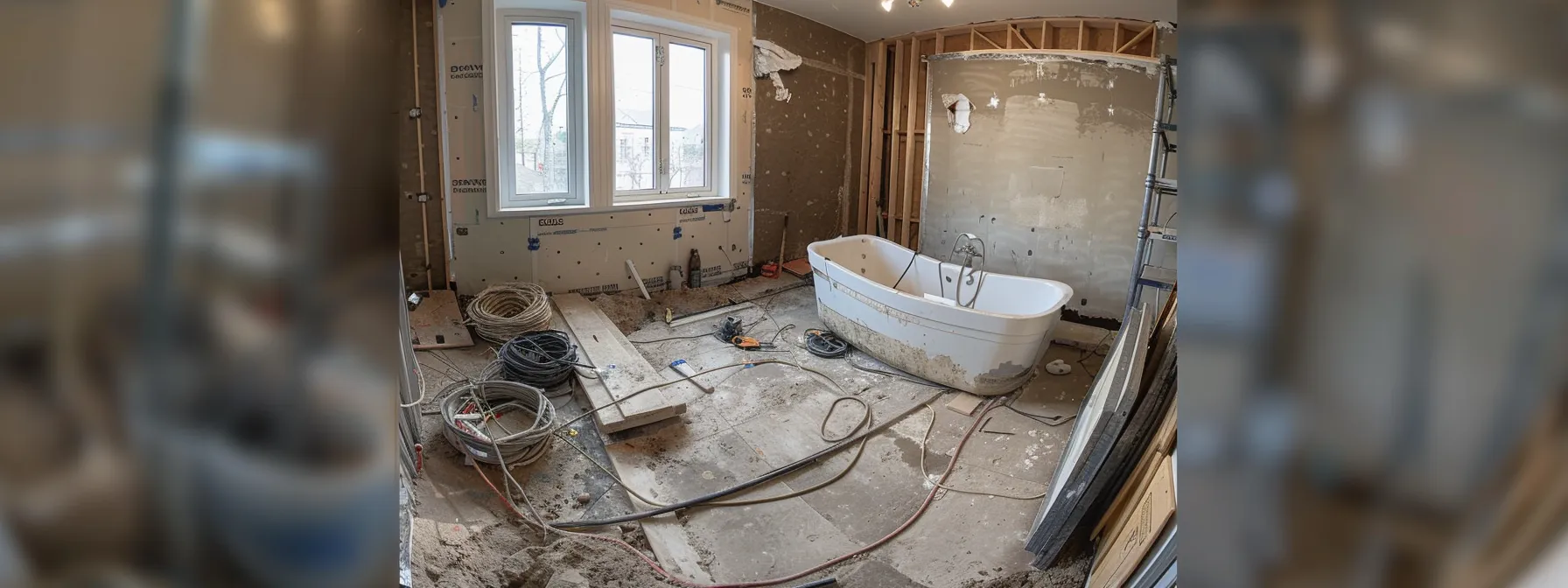
Understanding the detailed bathroom renovation cost breakdown is vital for homeowners planning a full bathroom remodel, particularly when considering each phase of the project. Expenses can accrue quickly, beginning with demolition and preparation, which lay the groundwork for further updates. The costs associated with plumbing updates and repairs often take precedence, as reliable systems are essential for functionality. Following that, attention turns to electrical work and lighting upgrades, which enhance both safety and ambiance. Tiling and flooring present another significant investment that affects the overall aesthetic. Fixtures and fittings, including sinks, toilets, and showers, are pivotal for form and function, while the expenses for vanities and countertops contribute to the bathroom‘s identity. Finally, the finishing touches such as paint, decor, and accessories, including careful caulk application, round out the project while allowing personalization. Each of these elements plays a crucial role in developing a comprehensive understanding of renovation costs, ensuring homeowners are well-prepared for their journey ahead.
Demolition and Preparation Expenses
The demolition and preparation expenses are foundational elements of any home improvement project, especially during a primary bathroom remodel. This initial phase involves removing outdated fixtures, tiles, and structures, including ceramic elements that may no longer meet the homeowner’s vision. Additionally, preparing the space for new installations requires careful consideration, such as assessing existing lighting and ensuring that plumbing and electrical systems are ready for the upgrades ahead.
- Removal of old fixtures and tiles.
- Assessment of plumbing and electrical systems.
- Preparation of space for new installations.
- Consideration of lighting arrangements.
- Disposal of debris and waste materials.
Costs of Plumbing Updates and Fixes
Plumbing updates and fixes represent a significant portion of any bathroom renovation cost breakdown. The installation or replacement of essential fixtures such as a shower or bathtub requires skilled labor and quality materials, particularly when integrating luxurious elements like marble for countertops or tub surrounds. Ensuring that the plumbing system supports these changes not only enhances the functionality of the room but also contributes to the overall aesthetic, especially when considering the alignment with the wall design.
Electrical Work and Lighting Upgrades
Electrical work and lighting upgrades are integral to enhancing both safety and ambiance in a bathroom renovation. Proper ventilation systems can help prevent mold growth, creating a healthier environment, especially in areas with high humidity. When selecting lighting fixtures, homeowners should consider materials such as wood for cabinetry and accents, ensuring that all elements harmonize while providing sufficient illumination for everyday tasks, including those involving toilet paper management.
Tiling and Flooring Price Points
Tiling and flooring represent a significant investment in any bathroom renovation, with prices that can vary based on the choice of materials and brands. When selecting tile for the floor plan, homeowners should consider both aesthetics and functionality, ensuring the tile complements other elements, such as the sink and fixtures. By exploring various options, including ceramic, porcelain, or natural stone, clients can find a balance between quality and cost, aligning their vision with their budget.
Fixtures and Fittings: Sinks, Toilets, Showers
When selecting fixtures and fittings for a bathroom renovation, homeowners need to consider both aesthetics and functionality to minimize risks such as water damage. Sinks, toilets, and showers require careful installation to ensure proper connections to valves and piping, especially if they are set on concrete floors. A well-chosen closet layout not only enhances usability but also plays a vital role in managing space and preventing long-term maintenance issues in the bathroom.
Vanity and Countertop Expenses
The expense associated with vanities and countertops can significantly influence the overall budget of a bathroom renovation. Selecting materials such as brass for fixtures and countertops can enhance the interior design while adding a touch of elegance. Additionally, careful consideration of grout choices will help improve the longevity and cohesion of the design, ensuring that each element works together harmoniously in the final outcome.
Final Touches: Paint, Decor, and Accessories
The final touches of a bathroom renovation significantly enhance the space’s overall ambiance. Homeowners often focus on paint colors, decor elements, and accessories like towels and shower curtains, making these decisions vital for achieving a cohesive design. Incorporating elements such as carefully selected paint for the drywall not only contributes to aesthetics but also provides a protective layer against moisture in the humid environment of a bathroom.
Understanding the intricacies of bathroom renovation costs is vital for any homeowner. Next, let’s focus on one of the most significant components: labor costs and what they mean for your renovation budget.
Labor Costs in Bathroom Renovations
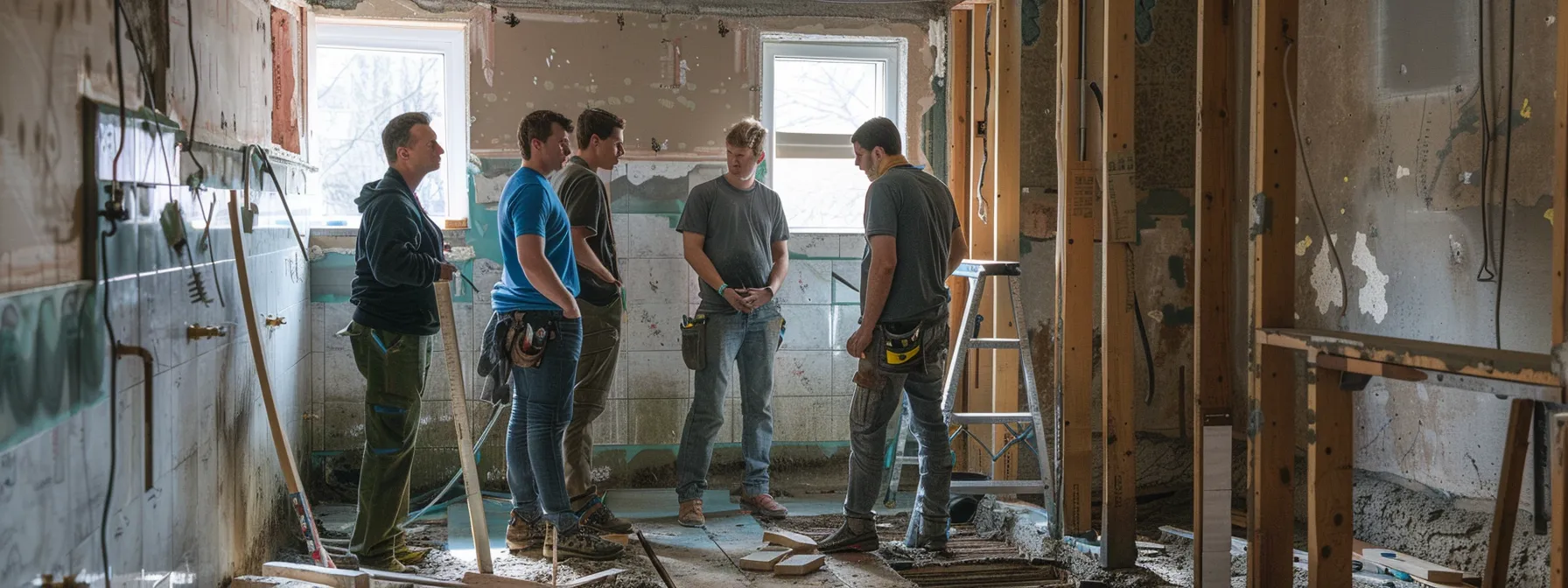
Understanding labor costs in bathroom renovations is vital for effective budgeting and planning. Homeowners often face a choice between hiring individual contractors for specific tasks or engaging full-service companies that manage the entire project. Each option has distinct implications for overall costs and project efficiency. Knowing the average labor rates for plumbing, electrical, and tile work can provide insights into what to expect financially. Additionally, the intensity of the labor required can significantly influence the project’s pricing; complex installations or extensive remodeling efforts often demand a higher labor investment, impacting both timelines and expenses. This section will delve into these key aspects, equipping homeowners with essential knowledge to navigate their renovation journey.
Hiring Individual Contractors vs. Full-Service Companies
Homeowners need to weigh the benefits of hiring individual contractors against full-service companies, each option bringing distinct advantages. Individual contractors often specialize in specific trades, potentially resulting in higher quality work in their respective areas, while full-service companies offer a streamlined approach, handling project management and coordination seamlessly. This choice impacts not only the quality of workmanship but also the efficiency of the renovation process, making it essential for clients to carefully consider their specific needs and the complexity of their projects.
Average Labor Rates for Plumbing, Electrical, and Tile Work
Understanding average labor rates for plumbing, electrical, and tile work is essential for homeowners budgeting their bathroom renovation. Typically, plumbing labor rates can range from $70 to $150 per hour, depending on the complexity of the tasks involved. Meanwhile, electrical work often falls within a similar range, while tile installation may start at $50 and can escalate with intricate designs or high-end materials.
How Labor Intensity Affects Project Pricing
The intensity of labor required for a bathroom renovation profoundly impacts overall project pricing. Complex installations, especially those involving custom designs or high-end materials, demand skilled professionals whose rates are often higher than standard labor costs. This relationship between labor intensity and financial outlay is critical for homeowners to grasp before commencing renovations.
Understanding the details of labor intensity can help homeowners plan their budgets more effectively. The more intricate the project, the greater the potential for escalating costs associated with specialized labor. Below is a table illustrating how varying levels of labor intensity affect project pricing:
Exploring the factors that drive labor costs can reveal surprising insights. Finding effective strategies to cut renovation expenses can lead to impressive savings without sacrificing quality.
Saving Strategies on Bathroom Renovation Costs
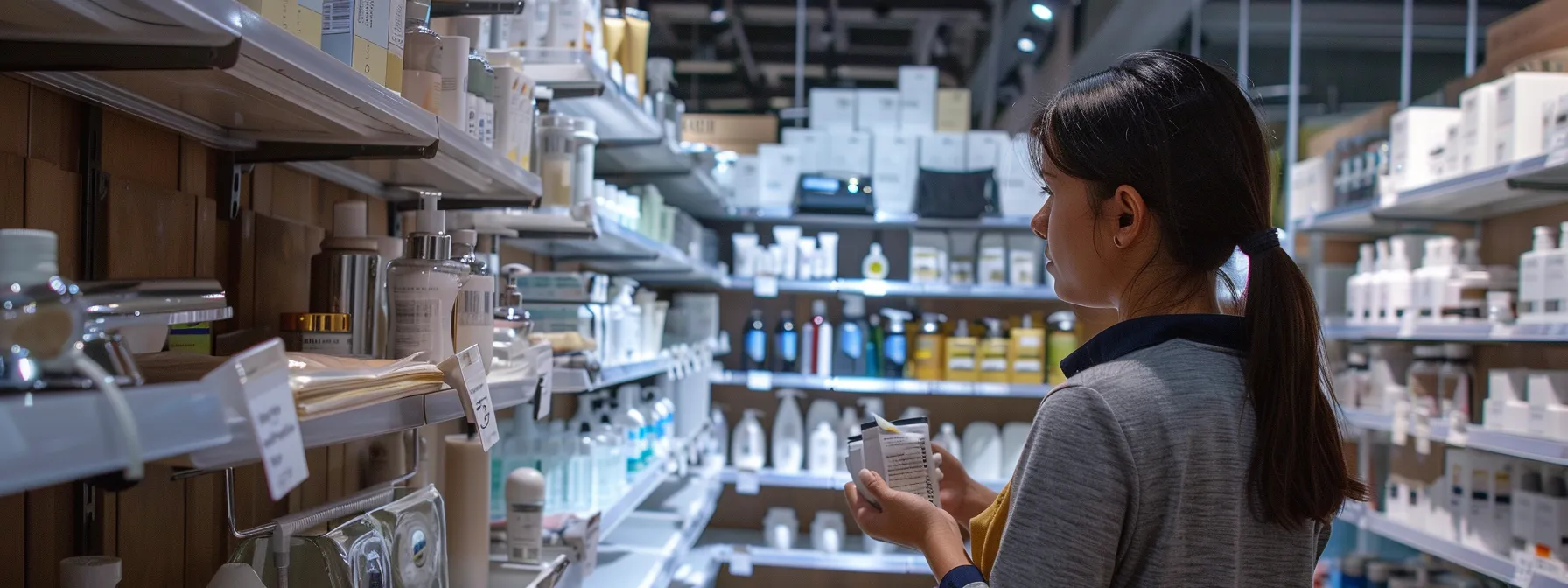
Implementing effective saving strategies can significantly reduce the overall costs associated with bathroom renovations. Homeowners may consider taking on certain tasks themselves, such as painting walls and handling simple installations, which can minimize labor expenses. Additionally, sourcing materials wisely allows clients to identify areas where they can indulge in high-quality items and areas where they can opt for budget-friendly alternatives. Timing the renovation strategically to coincide with off-peak seasons can lead to attractive discounts from contractors and suppliers, further helping to control the project’s financial demands. These approaches empower homeowners to creatively manage their budgets without compromising on their renovation vision.
What You Can DIY: Painting and Simple Installations
Homeowners can effectively reduce costs by tackling painting and simple installations themselves. Painting walls not only refreshes the space but also showcases individual style without the need for professional assistance. Additionally, installing items like towel racks or light fixtures empowers homeowners to further personalize their bathrooms while saving on labor costs:
- Choose paint colors that align with the overall design.
- Install towel racks and hooks for added storage and convenience.
- Replace light fixtures to enhance illumination and aesthetics.
- Add shower curtain rods and accessories for thoughtful finishing touches.
Sourcing Materials: Where to Splurge and Where to Save
Homeowners can maximize their renovation budget by carefully selecting where to invest in high-quality materials and where to opt for cost-saving alternatives. Key areas to splurge might include durable countertops and modern fixtures, which enhance both functionality and visual appeal, while budget-friendly choices can be made in items like tiles and paint, where the aesthetic can be achieved with careful selection. Recognizing the balance between style and practicality ensures a successful renovation.
Consider the following factors when sourcing materials:
- Invest in durable countertops made of granite or quartz.
- Opt for high-quality plumbing fixtures for longevity.
- Select budget-friendly tiles or paint that still offer a stylish look.
- Evaluate the cost versus the impact each material will have on the overall design.
Timing Your Renovation for Off-Peak Discounts
Choosing the right time for a bathroom renovation can lead to substantial savings, particularly by aligning projects with off-peak seasons. Contractors often face lower demand during these periods, which can translate to discounts on labor and materials. By scheduling renovations strategically, homeowners position themselves to negotiate better rates and maximize budget efficiency.
Renovating a bathroom can be a rewarding experience, but hidden expenses can quickly add up. It’s essential to be prepared for these unexpected costs that can catch homeowners off guard.
Unexpected Costs in Bathroom Renovations
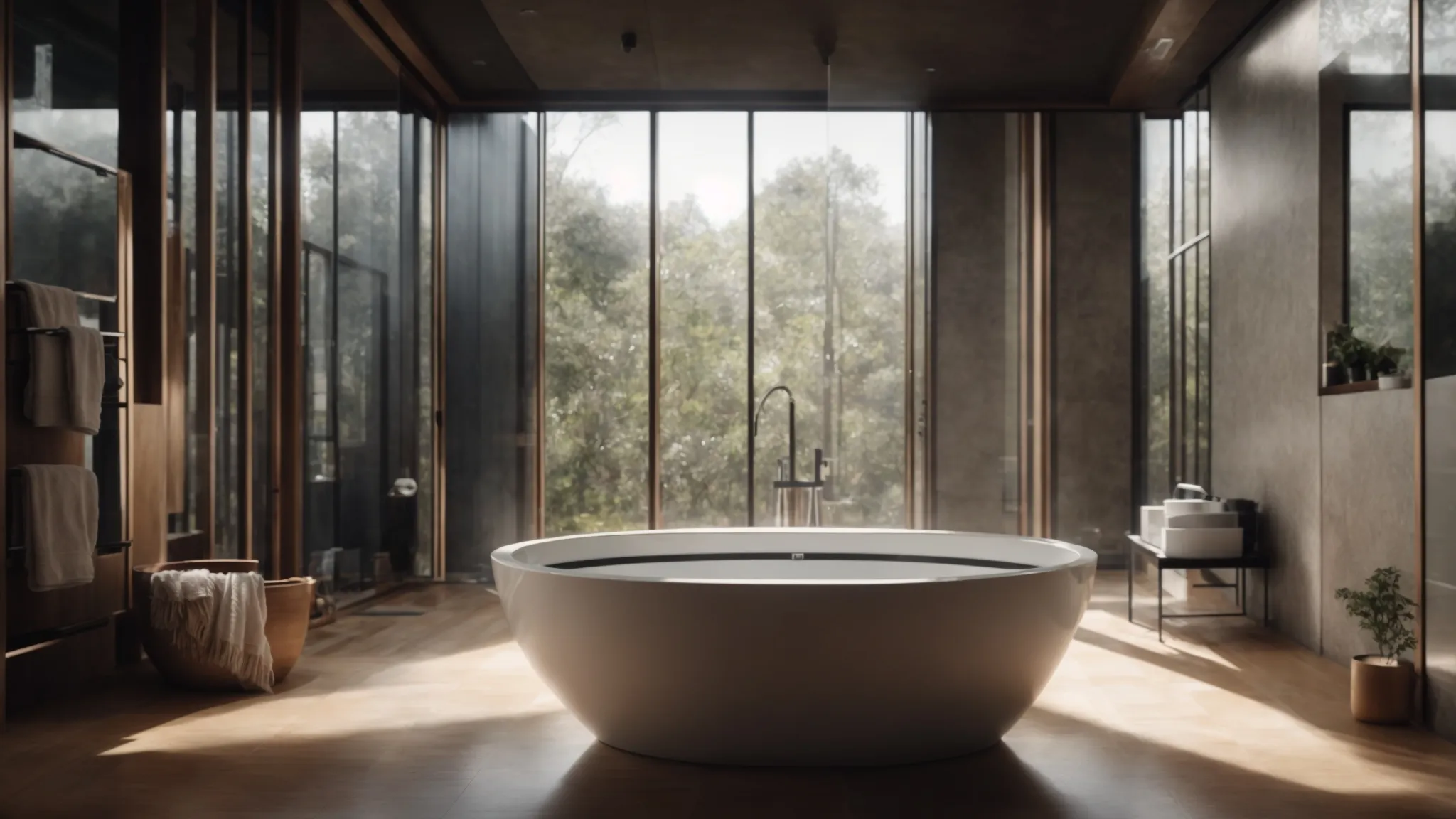
Homeowners often encounter unexpected costs during bathroom renovations that can disrupt financial plans. Being prepared for often-overlooked expenses is crucial. Issues such as outdated plumbing or hidden water damage can arise once the renovation begins, necessitating additional funds for repairs. Effective budgeting should include provisions for these potential surprises, allowing homeowners to adapt without significant financial strain. Contingency planning also plays a vital role; setting aside a specific percentage of the overall budget specifically for unforeseen circumstances ensures that unexpected costs do not derail the entire project. By anticipating what might go wrong, clients can approach their renovations with more confidence and clarity.
Preparing for Overlooked Expenses
Homeowners should anticipate expenses that may not initially come to mind when planning a bathroom renovation. Common surprises can include the need for updated plumbing or unforeseen structural issues that only become apparent once work begins. Setting aside a contingency fund allows clients to address these hidden costs without derailing their overall budget or timeline.
Budgeting for Issues Uncovered During Renovation
Budgeting for issues uncovered during a bathroom renovation is a fundamental aspect that many homeowners overlook. As renovations progress, unexpected challenges like foundational issues or outdated plumbing may arise, necessitating additional funds. Establishing a contingency budget helps ensure that these unforeseen expenses can be managed without significant disruption to the overall project.
Adopting a proactive approach allows for smoother navigation of potential complications that could negatively impact timelines and costs. Homeowners are advised to set aside a percentage of the total renovation budget—often suggested at around 10 to 20 percent—to cover any surprises that occur as work progresses. This preparation facilitates a more confident renovation experience, positioning clients to tackle challenges with a strategic mindset:
Contingency Planning: How Much to Set Aside
Contingency planning is a critical component of any bathroom renovation budget, as unexpected issues can easily arise during the project. Homeowners should consider setting aside approximately 10 to 20 percent of the total renovation costs to address any unforeseen events, such as plumbing repairs or structural concerns. By establishing this reserve, clients can approach their renovation with greater confidence, knowing they are financially equipped to handle potential challenges without compromising the overall timeline or project integrity.
Shifting focus from last-minute surprises, homeowners can take control of their renovation budget. By comparing quotes and uncovering hidden fees, they can ensure a smoother, more transparent experience.
Comparing Quotes and Avoiding Hidden Fees

Understanding the intricacies of quotes is crucial for homeowners embarking on a bathroom renovation. A comprehensive quote should outline all significant elements of the project, covering labor, materials, and timelines. Awareness of potential hidden fees often encountered in renovation contracts is equally important; these may include costs for unexpected permits, change orders, or rush charges that can lead to budget overruns. Effective negotiation with contractors can help mitigate expenses, enabling clients to secure fair pricing and avoid unforeseen financial pitfalls. By grasping these essential aspects, homeowners can foster a transparent relationship with their chosen contractor while safeguarding their renovation budget.
Understanding Quotes: What Should Be Included
A comprehensive quote for a bathroom renovation should include essential elements such as a detailed breakdown of labor costs, materials, and the project timeline. Homeowners should look for transparency regarding any additional charges, such as permits or disposal fees, that may arise throughout the process. By ensuring that all key components are clearly outlined, clients can make informed decisions and maintain control over their renovation budget.
Common Hidden Fees in Renovation Projects and Contracts
Homeowners must be vigilant about potential hidden fees that may arise during bathroom renovation projects. Often overlooked, these costs can substantially inflate the overall budget. Examples include unexpected permits, additional disposal charges, or rush fees for expedited work that might not be factored into the initial quote:
- Unexpected permit costs for plumbing or electrical upgrades
- Disposal fees for debris and old materials
- Rush charges for expedited service requests
Negotiating With Contractors to Lower Costs
Negotiating with contractors is an effective way for homeowners to manage renovation costs without sacrificing quality. By discussing project details and exploring various payment options, clients can often secure favorable terms and potentially reduce labor expenses. Establishing open communication allows both parties to work collaboratively, leading to a more cost-efficient renovation process that aligns with the homeowner’s budgetary constraints.
